| If you do NOT see the Table of Contents frame to the left of this page, then Click on this link to open ‘USArmyGermany’ frameset |
|||||||||||||||||||||||||||||||||
|
USAH Nürnberg |
|||||||||||||||||||||||||||||||||
|
|||||||||||||||||||||||||||||||||
| 116th General Hospital | |||||||||||||||||||||||||||||||||
| (Source: USAMEDDAC Nuernberg Fact Sheet; USAREUR History Office website) | |||||||||||||||||||||||||||||||||
| (Source: 130th General Hospital, Nuernberg; USAREUR History Office website) | |||||||||||||||||||||||||||||||||
| The healthcare facility structure was built throughout 1935 to 1937 for the German Army to serve the requirements of around 2-3 programs and their dependents and to look after the yearly conferences of the “Reichsparteitag” to which soldiers from all parts of Germany concerned take part in presentations and parades. It was called Standort-Lazarett.
When the United States Forces took control of operation of the health center (in 1945), the German clients needed to be left to German medical facilities. The devices in the health center, for the many part, remained in excellent condition and the x-ray makers were utilized up until about 1965. |
|||||||||||||||||||||||||||||||||
|
|||||||||||||||||||||||||||||||||
| (Source: STARS & & STRIPESMIDWEEK area, Jan 9, 1946) | |||||||||||||||||||||||||||||||||
|
|||||||||||||||||||||||||||||||||
|
The Germans constructed the 116th and opened it for organization in 1937. Its bed capability initially was 450, however when the intrusion began, it was bigger to accommodate 1,100. German clients were vacated on May 28, 1945, and the very first American client was confessed on June 24. Now, the 116th deals with in between 500 and 600 clients at a time. Since small and secondary disorders are normally looked after by lower medical facilities and system medical officers, its cases are normally severe. It has numerous emergency situation cases, and when a cosmetic surgeon gets an emergency situation call, he typically can be sure that he is going to deal with a gunshot injury or the victim of a traffic mishap. 1/Lt. Annette Pelletier of Salem, Mass., a nurse in surgical treatment, stated many victims of military car wrecks appeared to be significantly more banged up than traffic mishap victims– civilians– she had actually seen in the States. The occurrence of substance fractures, rugged bones extending through limbs, appeared much higher over here, she believed. The building of Army trucks and jeeps may have something to do with it, however Nurse Pelletier believed it most likely that soldiers went helling along faster than their civilian equivalents. “If a few of these individuals who bat along at 60 miles an hour might remain in the operating space a week and see the condition of these males we get to deal with, I do not believe they ‘d drive so quick,” Nurse Pelletier stated. Capt. Ivery E. Lamberth of Dallas, Tex., who is the head anesthetist and supervises of surgial devices, stated many mishaps on the highway in the Nurnberg location happened in the early part of the night; if there were none prior to 1 a.m., he might be quite sure there would not be anything doing prior to daytime. In the States, the majority of the worst wrecks happen after midnight, when individuals are filled to the antlers and excited to get house, or someplace. Lamberth stated the factor for early mishaps here appeared to be basic: Most attires desired their males to be in prior to 1 a.m., and they were generally hurt going or coming. A couple of nights earlier, he stated, an ambulance generated a soldier who had actually suffered a squashing injury of the throat and chest on the highway. Squashed cartilage and bone had limited his breathing up until he was wheezing like a consumptive on his deathbed. And, the soldier was on his deathbed. He passed away on the operating room without even having the ability to inform his name. When it comes to the gunshot injuries, Lamberth stated there were 2 stock descriptions from victims: (1) “I had actually simply begun to take the clip out and didn’t understand there was a cartridge in the chamber;” or (2) “I had actually begun to make an anticipate this weapon and was simply looking it over …” Most of gunshot injuries are small; rarely does a victim have a slug in his chest or stomach. And, possibly due to the fact that of the extensive desire for redeployment, a gunshot injury victim can be sure that his story will not be accepted without examination. If the examination divulges that the injury was rather less than simply unexpected, the victim loses rights to payment and the realities are gotten in upon his record. Anyhow, a male’s condition needs to be such that he will need 120 days of hospitalization prior to he will be delivering back house. Maj. Frederick J. Lesemann of Chicago, chief of surgical service, runs upon especially fragile cases. Lt. Col Frank G. Stephens is acting commanding officer of the entire healthcare facility. Approximately one-fifth of the 116th’s clients at an offered time have syphillis or gonorrhea. The 116th is moving clients with VD in main phases to another healthcare facility, and is accepting just guys with secondary infections. It has some clients with main infections whose treatment began prior to that judgment went into impact. They were stagnated, since, if they had actually been, they would have needed to begin taking penicillin injections all over. The series can not be broken. Syphillis victims get 60 shots of penicillin, one every 3 hours. Gonorrhea clients get 15 shots of peninillin, one every 3 hours, plus a sulfa drug. In the States and in the United Kingdom, males who contracted VD were normally rather ready to inform where they got it, service technicians in the ward stated. When they get it from a German lady, they are typically inclined to stall when asked to determine her. Much of the 116th’s organization is performed in the surgical treatment and in the VD ward, it has centers and departments to deal with nearly any illness or disorder. It has a psysio-therapy department, an X-ray department, a medical lab and an oral department that, under Lt. Col. William Rich, had more than 9,500 sittings as much as last Sept. 1. Clients and workers have a PX, a present store, a tailor store and a soda water fountain like the ones in Army healthcare facilities back house. The soda water fountain, especially, watches out of location in Nurnberg and it serves the exact same things as a pharmacy water fountain on Broadway. Evaluating from letters to the editor and conversations in Congress, it would appear that the concern of being redeployed and released is an especially hot one in the Medical Corps. A couple of at the 116th were asked how they felt about it. “I’ve been far from house a year, and I miss my spouse and kids,” one medical officer stated. “Naturally, I ‘d like to return and see them.” He did not state that he believed he was losing a great deal of cash in the Army. A group of nurses was asked whether they believed it was harming them specifically to be in the Army. The group consisted of 1/Lt. Marie Glenhon of Newark, N. J.; 1/Lt. Alice Henderson of Brighton, Mass.; 1/Lt. Edythe Cieman of New York; 2/Lt. Bernadette Dryer of New York, and 1/Lt. Dorothy M. Berger of New York. “It’s like this,” Nurse Berger stated “We understand what the point rating is and we understand roughly when we’ll go home, so there isn’t any unpredictability to mention. We offered.” One nurse, a young and comely one, was strongly shaking her head and quietly stating “no, no;” while Nurse Berger was speaking. Since Lt. Glennon is superintendent of nurses in surgical treatment, she most likely would rather not be determined. |
|||||||||||||||||||||||||||||||||
| If you have more info on the history or company of the 116th Gen Hosp/USAH Nürnberg, please call me |
|||||||||||||||||||||||||||||||||
| 385th Station Hospital | |||||||||||||||||||||||||||||||||
 Entryway to the 385th Station Hospital in Nürnberg, 1946 (Webmaster’s collection) |
|||||||||||||||||||||||||||||||||
| (Source: 385th Station Hospital, Nuernberg; installation of the “Our Army Hospitals” series that appeared in the Medical Bulletin released in USFET throughout the mid 1940s. Online copy at USAREUR History Office website) | |||||||||||||||||||||||||||||||||
| Found in Nürnberg, the approximate center of the U.S.-occupied zone of Germany, the healthcare facility plant run by the 385th Station Hospital has actually been open for the reception of clients because 24 June 1945. In name the 385th is relatively brand-new in the European Theater. The history of the system prior to 1 April 1946, the time of redesignation, was that of the 116th General Hospital. The initial company was triggered at Camp Ellis, Illinois, 10 March 1944; left for the United Kingdom 18 July 1944. On 29 July 1944, operation of Hospital Plant 4190 at (Uniacke) Barracks, Harrogate, Yorkshire, England, started and continued up until 20 April 1945. Leaving from England, 10 May 1945, workers and devices got to Area X, Camp Twenty Grand, Rouen, France, to wait for additional project. On 6 June, all workers, with the exception of those in the motor convoy, left in “40 and 8’s” for Nürnberg, getting to that location 3 days later on.
The healthcare facility website, Standort Lazarett, situated on the western edge of Nürnberg, was built specifically as a military medical facility. Begun in 1935 and finished in 1937, building compares positively with that of an American equivalent of 10 years earlier. A 15-acre plot of ground surrounded by high fences, landscaped with young trees, shrubs, little flower gardens and large front yards, add to a beneficial environment for treatment of the ill and hurt. On warm bright days ambulatory clients benefit from courses and yards for walking and sunbathing out of view of the general public. A little athletic field within the premises is readily available to convalescent clients for softball, track and soccer. By American requirements the healthcare facility was relatively contemporary and well geared up in the majority of aspects. It was not without damage. 0ne bomb had actually taken off in the front center area of the primary structure. The damage was fantastic structurally, none of the great medical devices was harmed. The expert personnel carried out under trouble for roughly 6 months, since the bomb harmed the big elevator utilized to carry litter clients to surgical treatment, X-ray, and physical treatment on the 3rd flooring of the main wing. Treatment of clients is restricted to 2 structures, the primary structure accommodatlng all cases with the exception of psychiatric clients who are restricted in a two-story structure nearby to the main medical facility structure. The primary structure is a four-story structure of brick building. The main wing includes administrative workplaces on the very first flooring; physical treatment, obstetrical-gynocological area and genito-urinary center on the 2nd flooring; surgical treatment and X-ray on the 3rd; and female clients on the 4th. This wing divides the medical and surgical services. The other structures on the premises are the lab and oral center in one structure; the mess halls (officers, nurses, employed males, and clients), Red Cross entertainment spaces, officers’ club and laundry in another structure; the motor swimming pool; 2 officers quarters; and the primary gate guard post. Employed males are quartered in a German kaserne one-quarter mile from the healthcare facility. Leisure centers are readily available for employed males at a Sport-Pltaz, around one-half mile from the barracks. An appropriate structure works as the employed males’s club. Cinder track, swimming pool and leaping pits are readily available in addition to great fields for softball and football. Inasmuch as the 385th Station Hospital lies near the scene of the War Crime Trials, client care and treatment has actually been accorded not just Allied Nationals however occassionally a witness for the defense. Under fantastic secrecy a few of the condemned accuseds were hospitalized for brief durations, while others were accompanied under heavy guard to the health center for unique evaluation. The trials of the significant crooks are ended, ongoing activity at the Palace of Justice will demand supplying healthcare facility treatment for the workers connected with the War Crimes Commission. What is believed to be special and uncommon in a big health center is the operation of one cooking area, which feeds, independently and at the very same hours, officers, nurses, gotten males, ambulatory and bed clients, consisting of an unique diet plan mess. Food prepared in the main kitchen area is carried by ways of insulated food carts throughout the health center and served within a matter of minutes after leaving the kitchen area. Ward kitchen areas are likewise supplied. The employed and clients messhalls use steam tables to keep food at appropriate temperature levels. Facilities to offer sufficient upkeep of motor transport were not expected, however a motor swimming pool store, big enough to accomodate 4 cars in the procedure of repair work, in addition to a lathe, different painting space and parts space, has actually made it possible to keep motor operations constantly at peak effectiveness. Restricted area had actually demanded much change to offer appropriate lodgings for different areas. Medical supply is making use of a whole basement to supply storage area for materials, to satisfy the needs of this health center and roughly one hundred satellite systems based upon this healthcare facility for medical materials. Post exchange activities utilize the basement location listed below one wing of the medical service. Appealing decors have actually balanced out the downside of areas. For absence of appropriate area the big out-patient center similarly operates from area assigned in the basement. Present building and construction underway, which ought to be finished throughout the summertime of 1947, will enhance client leisure centers. A theater, with a seating capability of 450 individuals, and a Red Cross structure, with big video game and handicraft spaces, outside tennis and badminton courts, will properly fulfill today requirements. Redeployment has actually provided the normal issues, nevertheless the objective of this health center has actually been achieved in spite of workers handicaps. From 24 June 1945 through 30 September 1946, the health center has actually confessed 16,185 clients, had 25,095 oral sittings, dealt with 56,646 outpatients and run an overall of 325,630 lab tests. Today healthcare facility leader, Colonel Alex P. Kelly, presumed command 1 March 1946 prospering Colonel Paul Hayes, who in turn had actually taken over from the very first leader, Lieutenant Colonel Joseph J. Hornisher, 12 August 1945. |
|||||||||||||||||||||||||||||||||
| 15th Evacuation Hospital | |||||||||||||||||||||||||||||||||
 Entryway to the 15th Evacuation Hospital in Nürnberg, 1940s (Webmaster’s collection) |
|||||||||||||||||||||||||||||||||
| (Source: 15th Evac Hosp Unit History; USAREUR History Office website) | |||||||||||||||||||||||||||||||||
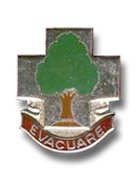 15th Evac Hosp DUI 15th Evac Hosp DUI |
|||||||||||||||||||||||||||||||||
|
Triggered as the 15th Evacuation Hospital on 25 August 1949 at Nürnberg, Germany, APO 696. The medical facility had a strength of forty-one officers, fifty-four female officers, one warrant officer and 2 hundred gotten guys and was appointed to Nuernberg Military Post with station at the previous German Hospital (Standort-Lazarett) situated at 300 Rothenburgerstrasse, Nürnberg. Upon activation, the 15th Evac Hosp changed the 385th Sta Hosp and all workers and the objective of the 385th were moved to the freshly triggered 15th. The Commanding Officer at this time was Lt Col Richard W. Pullen, MC. The objective was to provide main healthcare facility care to both military and civilian members of the Nuernberg Post and to run dispensaries in Nuernberg, Bamberg, Erlangen, Ansbach, Herzo Base, Hof, Bayreuth, Grafenwoehr, Coburg, Weiden, Vilseck and Schwabach. In addition to licensed TO/E strength, the medical facility used 6 DA civilians, one agreement cosmetic surgeon, twelve regional German civilian medical professionals and 4 hundred and twenty other non-professional German assistants. On 19 November 1951, the 15th Evac Hosp was appointed to Seventh United States Army and moved from Nürnberg to Kornwestheim, Germany, in a training status without clients. On 9 March, it once again moved from Kornwestheim to Baumholder where it acted as a 400-bed functional system up until 1 March 1954 when it moved from Baumholder to Münchweiler, once again in a training status without clients. |
|||||||||||||||||||||||||||||||||
| 16th Field Hospital | |||||||||||||||||||||||||||||||||
| 1954 | |||||||||||||||||||||||||||||||||
|
(Source: STARS & & STRIPES, April 16, 1954) |
|||||||||||||||||||||||||||||||||
| All oral services for the Nurnberg-Furth location are now managed by the U.S. Army Dental Clinic at the 16th Field Hospital in Nurnberg. The centralization job has actually led to the closing of the previous oral center at Merrell Barracks.
The combined center is run by the 87th Medical Detachment (Dental Service). The center includes 23 oral running systems, with 7 officers, 9 civilian dental practitioners and 4 oral hygenists. The center has the capability to manage some 250 clients daily. |
|||||||||||||||||||||||||||||||||
| 20th Station Hospital | |||||||||||||||||||||||||||||||||
 Entryway to the 20th Station Hospital, Nürnberg (Webmaster’s collection) |
|||||||||||||||||||||||||||||||||
 Nurnberg Army Hospital, c. 1963 (John Blaskovich) |
|||||||||||||||||||||||||||||||||
 Administration Building (John Blaskovich) |
|||||||||||||||||||||||||||||||||
| (Source: USAREUR Medical Bulletin, March 1961) | |||||||||||||||||||||||||||||||||
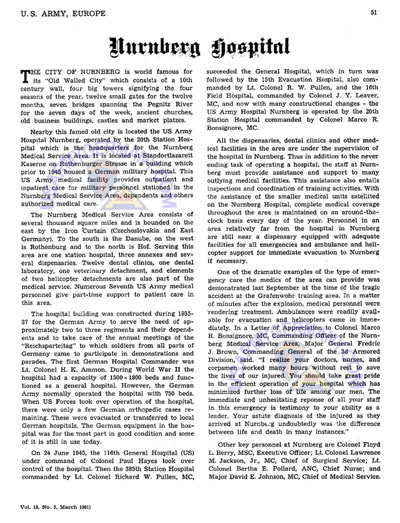 |
|||||||||||||||||||||||||||||||||
|
|||||||||||||||||||||||||||||||||
| 1966 | |||||||||||||||||||||||||||||||||
|
(Source: Email from Robert Anderson) |
|||||||||||||||||||||||||||||||||
| I encountered your site numerous years earlier and I have actually visited it from time to time. I was and continue to have an interest in your remarkable collection of details as I like my dad was a profession Army Officer.
In examining the First Anniversary Booklet of RMDI discovered a variety of familiar names. Relative to the 20th Sta Hosp/130th Gen Hosp and the USAH Nűrnberg. The last Commander of the 20th Station Hospital was COL Douglas Lindsay, MC. He was likewise the First Commander of the 130th General Hospital at Nűrnberg. Correction to among the image captions above You do not have an image of the Hospital Chapel. We were wed in the chapel in March 1968. USAMMCE EXTRA INFORMATION |
|||||||||||||||||||||||||||||||||
| 130th General Hospital | |||||||||||||||||||||||||||||||||
 130th General Hospital DUI 130th General Hospital DUI |
|||||||||||||||||||||||||||||||||
| (Source: 130th General Hospital, Nuernberg; USAREUR History Office website) | |||||||||||||||||||||||||||||||||
| On 24 June 1945, the 116th General Hospital (United States) under the command of Colonel Paul Hayes took control of control of the healthcare facility. The 385th Station Hospital commanded by Colonel Richard W. Pullen prospered the General Hospital. The 385th was followed by the 15th Evac Hospitallikewise commanded by Col Pullen. It was called the 16th Field Hospital commanded by Colonel J.Y. Leaver, and by 1961 it was called 20th Station Hospital commanded by Col. M.R. Bonsignore. After 5 years, it was called the 130th General Hospital
At present, the USAH Nürnberg is commanded by Colonel R.B. Stuart. |
|||||||||||||||||||||||||||||||||
| (Source: History of United States Army Hospital Nuernberg (130th General Hospital); USAREUR History Office website) | |||||||||||||||||||||||||||||||||
| Because October 1968, the United States Army Hospital Nürnberg has actually been run by the 130th General Hospital
The 130th General Hospital was triggered in Orleans, France, on 25 Dec 1964. On 1 March 1967, the healthcare facility was restructured and moved (as part of Operation FRELOCto Nürnberg, Germany. |
|||||||||||||||||||||||||||||||||
| If you have more info on the history or company of the 130th Gen Hosp/USAH Nürnberg, please call me | |||||||||||||||||||||||||||||||||
| 98th General Hospital | |||||||||||||||||||||||||||||||||
 United States Army Hospital in Nürnberg, 1975 (Paul Reese) |
|||||||||||||||||||||||||||||||||
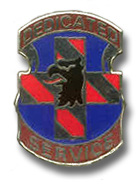 Nuernberg MEDDAC DI Nuernberg MEDDAC DI
|
|||||||||||||||||||||||||||||||||
|
1978 |
|||||||||||||||||||||||||||||||||
|
(Source: USAREUR Medical Bulletin, April-May 1978) |
|||||||||||||||||||||||||||||||||
| The Nuernberg MEDDAC by COL Richard B. Stuart, MD, MC The United States Army Medical Department Activity, Nuernberg has its Headquarters at the United States Army Hospital, Nuernberg, a 245-bed medical treatment center situated in the south western corner of the popular old city of Nuernberg. With a population of about half a million, Nuernberg in 1950 commemorated its 900th anniversary. Famous for its handicrafts, its toy producing market, and its substantial round towers on middle ages city walls, Nuernberg was developed to be the Capital of Europe by Adolf Hitler. In 1937, Hitler personally devoted the Nuernberg Army Hospital, built from 1935-1937 as the very first military medical facility constructed by the German Government after it renounced the constraints of the Treaty of Versailles. Throughout World War II, it was a Wehrmacht basic health center, run by the medical area of the German 17th Infantry Division. On April 20, 1945 it was inhabited by the United States Army, which has actually run it since. A theater and a chapel were included the 1950s. The healthcare facility now has 200 operating beds, consisting of 6 extensive care beds, 4 coronary care beds, and 32 bassinets. The Nuernberg MEDDAC presently offers extensive healthcare services for roughly 40,000 active service workers and 20,000 dependents situated in 10,000 square miles of northeastern Bavaria. It supplies secondary and tertiary healthcare, in addition to a significant quantity of medical care, to the 1st Armored Division, aspects of the VII United States Corps, and the Seventh United States Army Training Command. The United States Army Institute of Heraldry just recently authorized a distinct badge for the MEDDAC: It reveals a cross with red and white stripes – drawn from the coat of arms of the City of Nuernberg – upon which the head of a German eagle is superimposed, likewise from the city coat of arms. The MEDDAC slogan is “Dedicated Service.” The Nuernberg MEDDAC runs health centers in Amberg, Ansbach/Katterbach, Bamberg, Bindlach, Erlangen, Grafenwoehr, Hohenfels, lllesheim and Vilseck. A troop medical center is likewise run at Regensburg. To perform its objective the MEDDAC has actually designated roughly 143 officers, 450 employed workers, and 368 civilian workers. The officers consist of roughly 52 MC officers, 49 ANC officers, 33 MSC officers, 2 AMSC officers, 2 VC officers, 2 warrant officers (one is a PA), and one pastor. Veterinary services are offered by the 72d Medical Detachment (Veterinary Service), and preventive medication services by the Health and Environment Activity and the 71st Medical Detachment (Preventive Medicine). Veterinary services consist of the operation of an Animal Disease Prevention and Control Facility at the health center kaserne, and food assessment activities throughout the MEDDAC location. The Preventive Medicine Detachment carries out training of field sanitation groups at the different training locations of the Seventh Army Training Command. In the health center, specializeds offered consist of urology, ENT, ophthalmology, allergic reaction, dermatology, neurology, kid psychiatry, audiology, and speech treatment, in addition to more typical main specializeds. In 1977 there were 7,931 admissions to the health center and 1,408 births. There were 210,568 outpatient check outs to medical facility centers and 250,418 outpatient check outs to Nuernberg MEDDAC centers in 1977. In 1977 on a typical day there were 141 beds inhabited, 22 admissions, 4 births, and 1,263 center sees. The Nuernberg Hospital is particularly pleased with its 2 850 MA X-Ray systems with the ability of doing fluoroscopic, regular, and tomographic radiography with the very same X-Ray tube. Each $125,000 system has push-button control for client motion, tube tilt, and structural palpation, and any radiographic image can be reversed, turned upside down and amplified as needed on the image intensifier. A DuPont Instruments Automatic Clinical Analyzer in the lab speeds the conclusion of blood chemistry tests (29 tests are readily available and each takes just 37 seconds to finish. after the very first one is run all immediately). The Pharmacy Service has a sterilized IV items area that prepares its own customized sterilized intravenous options and hyperalimentation fluid for hospitalized clients. Another brand-new method readily available to gynecology clients is cryosurgery; culposcopy is likewise utilized for GYN clients. Another essential service is the 30-day Inpatient Drug and Alcohol Abuse Rehabilitation Program. With qualified personnel and centers for 16 clients at a time, the health center arranges and preserves an environment where detailed treatment is performed. Clients with alcohol and drug abuse issues connect with the rehab group and other members of the group, and take a look at the function of alcohol and drug abuse in their military professions, and life in basic. Modes of treatment consist of group treatment, specific counselling, relaxation treatment, communitystyled ward activities, psychodrama, transactional analysis, and direct exposure to Alcoholics Anonymous for alcoholic clients. Lots of graduates of this program have actually attained sobriety and liberty from drugs, and have actually preserved this throughout a substantial duration of follow-up. The Community Health Nursing Section offers a range of necessary services to the neighborhood. This consists of expectant moms and dad classes, a “We Hear You” crisis telephone service manned by the medical facility personnel and by volunteers, a five-minute health info radio program (“Today’s Health Tips”), a rest and health education center in the Post Exchange Shopping Center 4 days a week, kid advocacy services, and house gos to throughout the MEDDAC location. An important service is offered by the MEDDAC’s neighborhood nutritional expert, who performs nutrition education programs throughout the MEDDAC location, consisting of troop dining halls and health centers. She has actually likewise been holding a diet plan center in the healthcare facility, counsels obese soldiers in the Weight Control Program, and composes a column for the Nuernberg Military Community ACS “Hotline” publication. In the last few years a significant quantity of brand-new building and construction and restoration has actually been finished in Nuernberg MEDDAC treatment centers. The big Grafenwoehr and Katterbach Health Clinics and Dental Clinics, and the Erlangen Health Clinic, have actually been totally refurbished. An entirely brand-new $1,550,000 health center and oral center for the Bamberg Military Community is now under building (forecasted conclusion date: 1 September 1978). The greatest task includes a $25 million addition and remodelling job for the United States Army Hospital, Nuernberg. Building ought to begin in mid-1978. In the meantime, a DM 1.9 million MOUSF (Modernization of United States Facilities by the FRG) billet remodelling started on 5 October 1977 on one of 2 health center kaserne structures. When the 2nd structure is finished in September 1978 the billets for the Nuernberg MEDDAC soldiers will be the finest in USAREUR. The MEDDAC Commander is COL Richard B. Stuart, MC. His DEROS is 24 July 1979. |
|||||||||||||||||||||||||||||||||
|
1982 |
|||||||||||||||||||||||||||||||||
|
(Source: MEDCOM EXAMINER, December 1982) |
|||||||||||||||||||||||||||||||||
| Nuernberg: The city and the MEDDAC By Ruth Hamill Editor’s note: This is the 5th in a series of posts highlighting 7th MEDCOM centers. Future concerns of the MEDCOM Examiner will include each of the MEDDACs, MEDCENs and other MEDCOM activities in a series of posts developed to even more familiarize individuals throughout 7th MEDCOM with each center. Nuernberg is a familiar name to numerous Americans in your home and abroad. Not just is it the house of the yearly Christkindelmarkt, it is likewise kept in mind as the website of the Nuernberg War Trials following World War II. More than 900 years of ages, Nuernberg’s different history offers a stunning background for today’s contemporary city. The Nuernberg MEDDAC is headquartered in the 98th General Hospital situated on Standort-Lazarett Kaserne in the southwestern corner of the popular city. The MEDDAC serves 74,000 qualified healthcare receivers (51,000 armed force) spread throughout 12,000 square miles. The geographical location of duty reaches from the borders of East Germany and Czechoslavakia on the north and cast, to the Danube River on the south and the Tauber River on the west. According to Col. Leslie M. Burger, MC, leader of the Nuernberg MEDDAC and the 98th General Hospital, it is 7th MEDCOM’s biggest neighborhood healthcare facility in regards to population served and the variety of health centers. He likewise stated that the qualified population is increasing. The MEDDAC supplies assistance for the 1st Armored Division, the 2nd Armored Cavalry Regiment and other components of VII Corps, the 7th Army Training Command, specific centers in Saudi Arabia and the American embassies in Prague and Vienna. Building of the health center started 45 years back and was finished in 1937. It was the very first Army health center the German federal government constructed after their renouncement of the Treaty of Versailles. The Wehrmacht Hospital was planned as a masterpiece for the then “New Germany” and was personally committed by Adolf Hitler. It was called Standort Lazarett (regional military health center). The term “Lazarett”, utilized in combination with a number of 7th MEDCOM centers, go back to the time of the Crusades when there were 5,000 leprosariums in France and Germany alone. The leprosariums were frequently called Lazar-houses, so called since generally Lazarus was thought to have actually experienced the illness. Given that crusaders (soldiers) brought the illness into Europe, military health centers have actually been called “Lazaretts” since. |
|||||||||||||||||||||||||||||||||
|
|||||||||||||||||||||||||||||||||
| Given that 1945 the medical facility has actually had a number of renter systems. On Oct. 15, 1981 the center was formally designated as the 98th General Hospital. In addition to the 98th, the Nuernberg MEDDAC likewise supports 10 distant health centers in Crailsheim, Katterbach, Illesheim, Bamberg, Bindlach, Erlangen, Grafenwoehr, Vilseck, Amberg and Hohenfels.
The MEDDAC consists of the 72nd Medical Detachment (Veterinary Services) commanded by Lt. Col. Clifford Thigpen and the 71st Medical Detachment (Preventive Medicine) headed by Capt. Ted Lamoe. The 87th Medical Detachment (Dental Service) is colocated in the setup with the healthcare facility, today offers its own command under the company of the Nuernberg Dental Activity (DENTAC) commanded by Col. Wallace Luther, and runs 13 oral centers. |
|||||||||||||||||||||||||||||||||
| New Care Center There have actually been various little jobs over the years to update the health center, the existing $40 million brand-new building and remodelling is the very first significant job because the main area that was harmed in the war was fixed in 1947. It consists of a 118,750 square foot addition finished in April 1981 and committed by Maj. Gen. Floyd W. Baker, leader of 7th MEDCOM. The addition was recognized as a military building and construction line product in 1966, there were many hold-ups due to Fiscal restraints brought on by the Viet Nam period such that the agreement was not granted till December 1975. Building and construction started July 15, 1978. The addition includes a brand-new operating suite with 4 operating spaces, a healing space 14-bed ICU/CCU, Central Material Supply, Emergency Room, Outpatient Department, Radiology, Pathology, Orthopedic Clinic, Physical Therapy, Department of Medicine (with specialized centers), Labor and Delivery, and the Newborn Nursery. The remodelling part of the task includes 247,670 square feet and is arranged for conclusion by 1985 and will consist of a total restoration of all centers. According to Lt. Col. Ann Philiben, Chief Health Facililes Planning Officer, there are a number of continuous jobs al the outlaying health centers. A $559,000 remodelling of the Illesheim Clinic started June 22, 1981 and was finished this year. A brand-new 13,266 square foot structure has actually been built to house the Amberg center. The Clinic, costing in excess of 3 million DM, was started on August 24, 1981 and opened on October 8, 1982. The Nuernberg Dental Clinic is likewise in the middle of an over 2 million DM remodelling which need to be finished in January 1983. The Nuernberg MEDDAC provides a comprehensive variety of services to consist of internal medication, dermatology, nuerology, pediatrics, basic surgical treatment, ophthalmology, ENT, urology, orthopedics, podiatry, physical treatment, audiology, speech pathology, obstetrics-gynecology, family medicine, emergency situation medication, psychiatry, psychology, social work, preventive medication, dental surgery and anesthesiology. According to Col. Burger, the MEDDAC is supported by the Nuernberg City medical facility, the Fuerth City Hospital and likewise uses the exceptional neonatal and neurosurgical centers of the University of Erlangen Medical. The 98th General Hospital presently has 175 beds. The Hospital averages 675 admissions monthly. There were over 450,000 outpatients seen MEDDAC-wide in 2015 and over 1,200 children were provided at the Hospital. Neighborhood minded Col. Burger, an internist, and the expert in transmittable illness to 7th Medical Command, has actually remained in Nuernberg given that May, 1980. He took command of the MEDDAC in June 1982 after acting as Deputy Commander and Chief, Professional Services. Dr. Burger is most thinking about going out into the neighborhood. He specified, “the factor we are here is to offer health services for the 74,000 soldiers and member of the family who live and operate in our geographical area. Whether it be vision screening in the schools, offering a teen center for our kids in the high school, using a cast to a fractured arm in Orthopedics or doing a complex surgery, it is our objective to supply the high quality healthcare our clients are worthy of.” Col. Brodes H. Hartley, Executive Officer for the Nuernberg MEDDAC, included, “Our personnel is actively associated with neighborhood programs such as KONTAKT, Chrismas exchanges and German-American Men’s and Women’s Clubs. The Nuernberg High School Scholarship Fund is basically dealt with by the MEDDAC. I would state we are extremely associated with neighborhood activities.” Hartley will retire on December 3, and prepares to sign up with the personnel of Florida A&M University in Tallahassee. Col. Edward H. Uemura who curretly commands the 68th Medical Group, is his replacement and will come on board January 17. Of Medieval culture There is no absence of things to do in Nuernberg, thanks to its long history. Centuries ago Nuernberg was a center of middle ages culture situated at the crossway of 2 primary highways of European traffic. Its primary markets did not vary significantly from today’s toys, great clothes and spicy gingerbread. The city perservered throughout the years the Altstadt and much of the brand-new city were terribly harmed by battle throughout World War lI. After the war, Nuernbergers were so worried with the repair of the city wall, it get greater top priority than shelter for the war-weary citizenry. Following the repair work of the wall, the Altstadt was carefully brought back and today has 12 square acres of narrow streets including an unmatched collection of work of arts of architecture, sculpture and paintings, all situated within minutes of the Nuernberg MEDDAC. |
|||||||||||||||||||||||||||||||||
|
1980s |
|||||||||||||||||||||||||||||||||
| (Source: USAMEDDAC Nuernberg Fact Sheet, Feb 1982; USAREUR History Office website) | |||||||||||||||||||||||||||||||||
| The Nürnberg MEDDAC supplies assistance for all 1st Armored Division components of VII Corps and the Seventh Army Training Command including a location of roughly 12,000 square miles.
The client population is around at 73,000 (50,000 military, 21,500 relative and 1,900 others). The typical day-to-day outpatient load for the MEDDAC is 1,300 with roughly 550-600 clients being seen at the healthcare facility. The inpatient bed usage averages 85% of the beds availabe (approx. 144 everyday). The healthcare facility averages 3 children provided, 23 clients confessed, 10 operations carried out and 10,000 lab treatments achieved daily. The specializeds used at the health center can be divided into the significant classifications of surgical, medical and psychological health. In surgical treatment the specializeds are basic, orthopedic, eye, ear, nose & & throat, physical treatment, podiatry, speech pathology, audiology, and urology. In medication the healthcare facility uses internal medication, neurology, dermatology and pediatrics. In psychological health the specializeds consist of adult psychiatry, kid psychiatry, social work service, inpatient alcohol and drug abuse treatment, psychology, and Community Health Nursing which offer numerous therapy and education services. COMPANY (1982 ): |
|||||||||||||||||||||||||||||||||
|
|||||||||||||||||||||||||||||||||
| The 87th Medical Detachment (Dental Services) is colocated in the setup with the medical facility however offers its own command under the company of the Nuernberg Dental Activity (DENTAC). The detachment runs 13 oral centers throughout the exact same location covered by the MEDDAC. | |||||||||||||||||||||||||||||||||
| If you have more details on the history or company of the 98th Gen Hosp/USAH Nürnberg, please call me | |||||||||||||||||||||||||||||||||
| 536th General Dispensary | |||||||||||||||||||||||||||||||||
|
1952 |
|||||||||||||||||||||||||||||||||
|
(Source: THE DAILY REGISTERHarrisburg, Ill., March 22 1952) |
|||||||||||||||||||||||||||||||||
| First Lt. McDonald is the commander of the 536th General Dispensary at Ansbach.
The dispensary is a 43-bed center situated in a four-story brick structure. The personnel includes medical officers, oral officers, an administrator, employed experts and civilian staff members. |
|||||||||||||||||||||||||||||||||
|
1962 |
|||||||||||||||||||||||||||||||||
|
(Source: Email from Larry Moore) |
|||||||||||||||||||||||||||||||||
| I was with the 536th General Dispensary at Ansbach from Sept 1962 till March 1964. At that time it was on Hindenburg Kaserne. The dispensary was secondary to the 20th Station Hospital, Nuremberg, Germany.
We used the USAREUR spot– the Flaming Sword. Among the Doctors was a Capt. Carr; there was likewise a Capt. Barth, First Sgt. Reynolds, workplace mgr was Spec 5 Moctezuma, Spec 4 Roy Underwood, Spec 4 Marvin Spatz was the Pharmacist, had a PFC Jimmy Dickson, PFC Freddy Alexander, PFC Charles Lara, there were more however I can’t keep in mind names. I was a PVT E-2. I was prepared in March 1962. Went thru standard at Ft.Leonard Wood, MO. and medic training at Ft.Sam Houston, San Antonio, TX. I did get an Honorable Discharge when it was over. I do not have any images. The dispensary was a little 2-story bldg. From your map I’m sure it was # 5365. We just looked after dependants (partners and kids), MP’s and Medics. I think our real estate was bldg. 5369 and commissary was 5401. In our real estate was MP’s and Medics, I believe among the MP’s was Kenny Stabler later on played quarterback for the Raiders. They had some type of little football league there. That is the very best I can provide you. |
|||||||||||||||||||||||||||||||||
| 72nd Medical Detachment (Veterinary Services) | |||||||||||||||||||||||||||||||||
|
(Source: Robert L. Smith, 72nd Med Det) |
|||||||||||||||||||||||||||||||||
| I had actually simply discovered the Regensburg page. I was appointed to the 72 Med. Det. VFI, 20th Station Hospital, Nurnberg. The VFI means Veterinary Food Inspection.
We was accountable for examination, appropriate rotation of food products, and tidiness of Class 1 Supply points, mess halls and Commissaries for any and all U.S. Military Installations. We likewise did vaccinations on animals owned by the military and the soldiers (family pets) that were station there. My trip of responsibility in Germany began in 1962 in Nurnberg. In the summertime of 1963 I was TDY to Regensburg for the rest of my time in Germany which was the summer season of 1965. The 72nd. had a little workplace at the Class 1 Supply Point in Regensburg. Out of that workplace I likewise had the commissaries in Landshut, Straubing and Hohenfels. The Commissary for the toops, spouses, and independents was at the very same location as the Class 1 Supply Point, just in front of if I keep in mind. Where was that? I do not keep in mind. I do not believe that it was on any of the kaserne’s that the U. S. inhabited at the time. Can you assist me please? I had actually wed a German National when I remained in Nurnberg and we were living north of the river. I bear in mind that I needed to take a bus to get to work, do not keep in mind if I needed to make a transfer or not. There was railway stimulate into the substance to get railway vehicles for the supply point. Looks like there were other structures however I did not have anything to do with them so am lost to what all existed. |
|||||||||||||||||||||||||||||||||
| Associated Links: | |||||||||||||||||||||||||||||||||
Sunday, January 22, 2023
USAREUR Units - 7th Medical Command - USArmyGermany.com
Subscribe to:
Post Comments (Atom)
Open Your Future: Pursue a Dental Assistant Online Degree for a Rewarding Career
Unlock Your Future: Pursue a Dental Assistant Online Degree for a Rewarding Career Are you looking for a fulfilling career in the hea...

-
23-year-old Kelli Bordeaux was thrilled to begin a brand-new chapter in her life as a battle medic at Fort Bragg. One night, she disappear...
-
Full-time Oral Assistant DA – Point Loma/San Diego, CA – $15 to $23/ hr DOE – Complete Advantages … We are searching for an experience ...
-
On February 23, 2024, Dr. Fuller Robinson died in harmony at the age of 95. From 1981 to 2023, he made over fifty medical objective journey...
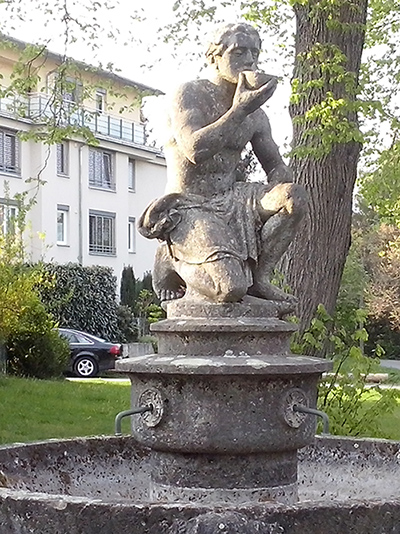
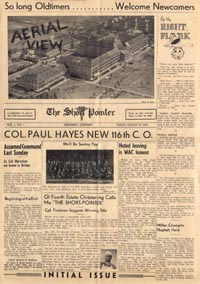
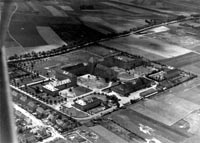
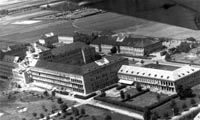
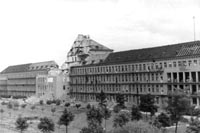
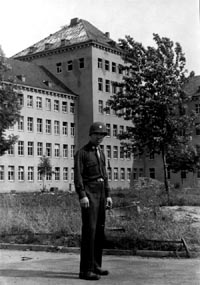
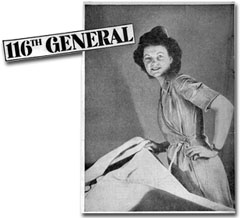


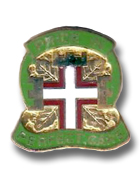 98th General Hospital DI
98th General Hospital DI 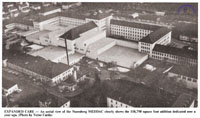
No comments:
Post a Comment